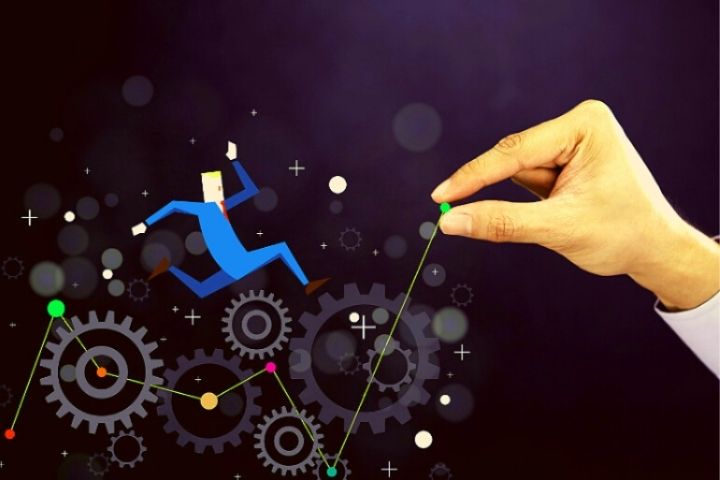In this article we’re going to discuss driving tech trends in 2021.
Technological progress continues to shape the way people work and the kinds of functions that organizations need to fill.
Professionals with Python, Cybersecurity and Blockchain programming skills will continue to be in high demand this year, along with near-omnipotent AI and Big Data competencies that are fundamentally changing roles within and outside of the tech sector.
Table of Contents
Machine Learning
- Machine learning is a data analysis method that automates the creation of analytical models. It is a branch of artificial intelligence based on the idea that systems can learn from data, identify patterns, and make decisions with minimal human intervention.
- The main machine learning programming languages are Python, C ++, R , but Julia, Scala, MATLAB, and SA S are also part of this specialty. The languages used are dictated by the environment and the industry in which they are applied.
- Data scientists in financial services can use a combination of Python, SAS, and Matlab, to allow the incorporation of all aspects of data modeling, algorithm development, risk and statistical analysis, web analytics and data extraction.
Big Data
- Big Data is a term that describes the large volume of data – both structured (from internal CRM / data systems or external information providers) and unstructured, this being the main focus (Internet / web-based) – that floods a business daily.
- Big data can be analyzed to extract information that leads to better business decisions (for example, product improvement) and business strategy.
- Defined by the three key challenges called the “3 Vs” (volume, speed and variety) revolve around data capture, storage, analysis, transfer, interrogation and privacy. The key technologies and tools are: Amazon EMR, Apache (Hive, Pig, Spark), Map R, Hadoop, MongoDB and in general, NoSQL databases.
Python Programming
- Python is an increasingly popular tool for data analysis and data science. Python was explicitly designed to a) make code written in Python easy for humans to read, and b) minimize the time required to write code. It is one of the recent tech trends.
- Many high-traffic websites, such as YouTube, Spotify, and Dropbox , were built using Python, as it allows data to be created, updated, stored, and retrieved across various libraries and operating systems. Python is widely used for data science, statistical analysis, modeling, and machine learning, with extensions such as SciKit, SciPy, Pandas and Numpy, Keras, or Tensorflow.
AI Engineering
- Artificial intelligence (AI), often considered the “Holy Grail” within the tech community, is an area of computing that emphasizes creating intelligent machines and systems that work and react like humans. Some of the activities that artificial intelligence computers are designed for are: predictive analytics, speech recognition, learning, planning, and problem solving. Knowledge engineering and machine learning, Machine Learning, as well as its evolution, Deep Learning or Deep Learning, are the axis of AI engineering, and they are very complex.
- Deep learning networks, neural networks, have been applied to fields such as computer vision, speech recognition, natural language processing, audio recognition, social media filtering, bioinformatics, drug design. , is where the greatest results have been produced. It is one of the on-demand tech trends.
- Some of the real-life situations in which advancements in this field are applied include Siri, Alexa, Pandora, Netflix, Chatbots, and Smart Cars . Development languages are those that are reflected in machine learning.
Knowledge Of Cybersecurity
- “Cybersecurity” is the practice of protecting computer servers, mobile devices, electronic systems, networks, and data from malicious attacks . The term is applied in various contexts, but is more in line with the essential elements of technical information security operations (InfoSec being the generic term).
- New security threats arise every day, so it is important that professionals in this field have the capacity to adapt and be curious, and can improvise when designing counterattack strategies.
Data Visualization
- Data visualization tools go beyond the standard tables and charts used in Excel spreadsheets, displaying data in sophisticated ways like infographics, dials / gauges, sparklines, heat maps, and fever charts.
- Visualization tools such as Tableau, QlikView, Power BI, and Micro strategy help companies make better business and strategic decisions by extracting data from financial, business, marketing, and operations systems. Creating dashboards within these tools allows end users to manipulate or drill down into data to improve query and analysis. Microsoft SQL or Oracle SQL (PL / SQL).
Data Governance
- Data governance is a data management concept that enables an organization to ensure high data quality throughout the entire data lifecycle. The main areas of data governance are availability, usability, consistency, data integrity, and data security.
- This includes establishing processes to ensure effective data management across the business, such as proactive accountability for the adverse effects of poor data quality, and ensuring that data held by a business can be used effectively throughout the organization.
BlockChain
- The Blockchain is a growing list of records (called blocks) that are linked using cryptography. Each block contains a cryptographic hash of the previous block, a timestamp, and transaction data.
A Blockchain is resistant to modification and is “an open and distributed ledger that can record transactions between two parties in an efficient, verifiable and permanent way.”
- For use as a distributed ledger, a Blockchain is usually managed by a peer-to-peer network that validates new blocks and cannot be retroactively modified without altering all subsequent blocks. Originally invented in 2008 as a public transaction record for the cryptocurrency bitcoin, the invention of the Blockchain for Bitcoin made it the first digital currency to solve the problem of ‘double spending’ without the need for a trusted authority or central server.

